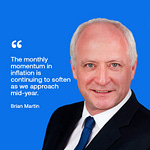A fragile calm has returned to global markets after weaker-than-expected US jobs growth data halted this week’s rout in US Treasuries. Oil prices fell 5%.
In part two of our bonus deep-dive interview marking the 40th anniversary of the Hong Kong dollar’s peg, ANZ’s Chief Economist for Greater China Raymond Yeung looks at its digital future, and why a peg to the renminbi is unlikely.
5 things to know
The 10-year Treasury yield fell to 4.74% from a new 16-year high of 4.88% after ADP private sector jobs rose 89k in September. Markets forecast 150k. The S&P 500 and Nasdaq were up 0.3% to 0.7% in late trade. The A$ and NZ$ bounced off lows to 63.2 and 59.1 USc respectively. Oil prices fell 5%.
ANZ’s Head of G3 Economics Brian Martin says this week’s selloff showed markets were finally hearing the ‘higher for longer’ talk from the Fed and ECB.
The RBNZ held its cash rate at 5.5% as expected and adopted a slightly less hawkish stance than expected, says ANZ Senior Strategist David Croy.
South Korean industrial production rose 5.5% in September, the fastest growth since June 2020 and well above forecasts. ANZ Asia Economist Krystal Tan points to strong growth in high-performance memory chips.
Krystal says headwinds remain for South Korea’s factories, including a still-elevated inventory-to-shipping ratio and soft retail sales.
Bernard
PS: Look out tomorrow for our preview of the all-important US Non-Farm-Payrolls due on Friday night.












